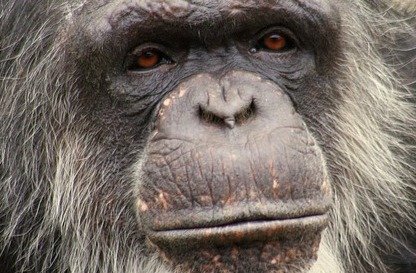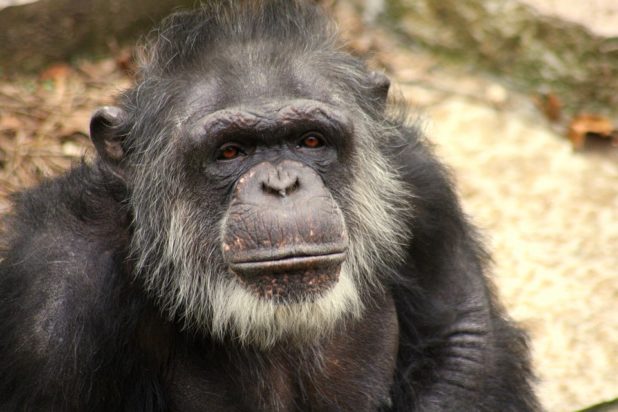“Age is just a number.”
If you’ve ever wondered why we needed women in science, this is why.
Finding that first gray hair is a rite of passage for humans. It’s also a sign, of course, that we’re getting older — and more are on the way. For chimpanzees, however, hair color doesn’t follow the same linear path. As scientists from The George Washington University explain, observing gray or silver hair on a chimpanzee doesn’t mean you’re looking at an old timer.
While these findings may sound fairly inconsequential at first, in actuality they challenge the significance of the gray phenotype among non-human beings. Patches and areas of gray hair are very common in chimpanzees. The amount and locations of discoloration, however, varies greatly from chimp to chimp.
Most chimpanzees see portions of their hair gray over time until they reach middle age. After that point the graying process appears to level off.
“With humans, the pattern is pretty linear, and it’s progressive. You gray more as you age. With chimps that’s really not the pattern we found at all,” explains lead study author Elizabeth Tapanes, a Ph.D. candidate in the GW Department of Anthropology, in a release. “Chimps reach this point where they’re just a little salt and peppery, but they’re never fully gray so you can’t use it as a marker to age them.”
To produce evidence that gray hair is not indicative of old age among chimps, the study’s authors gathered together a series of photographs of two chimpanzee subspecies. Sets of photos for both subspecies included wild and captive chimps.
Researchers closely examined each photo, and took note of the chimps’ gray hair. They then cross examined each chimp’s recorded age with the amount of visible gray hair on their body.
…
The idea behind this research came to lead author Dr. Brenda Bradley, an associate professor of anthropology, as she was observing chimpanzees in Uganda for five years. At the time, she kept assuming the chimps with more gray hair were older. After learning that wasn’t the case, she set out to explore the topic further.
Surprisingly, there hasn’t been much research performed on gray hair development in chimpanzees, or any other wild animal for that matter, before this project. Of course, most of the research on graying hair among humans focuses on the cosmetic side of things.
“There’s a lot of work done on trying to understand physiology and maybe how to override it,” Dr. Bradley notes. “But very little work done on an evolutionary framework for why is this something that seems to be so prevalent in humans.”
These women literally looked at pictures of chimpanzees and counted gray hairs, hoping that, eventually, this would somehow lead them to “override” the graying mechanism in humans. It is both funny and sad, until you remember that these women are considered scientists, at which point you should feel disgusted.
Given enough freedom, women will start having sex with chimpanzees and/or counting their grey hairs because women who are not under direct orders of men are utterly useless and totally incapable of doing anything worth doing.
With women, it’s always about how they look and what people think of them.
Female scientists making feeble attempts at figuring out how to stop themselves from aging is a blatant example of this, but the fact that most women in the workplace are not just unproductive but also an active attack on the productivity of others is also a consequence of it.
Women work jobs the same way they played house when they were little. To them, everything’s just a game of appearances.
“What’s the least amount of effort required to look as if I were doing something for real?”



